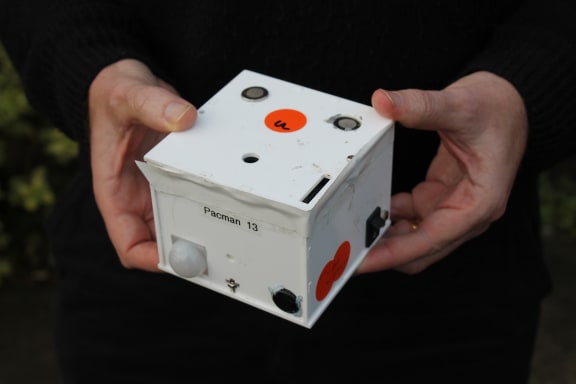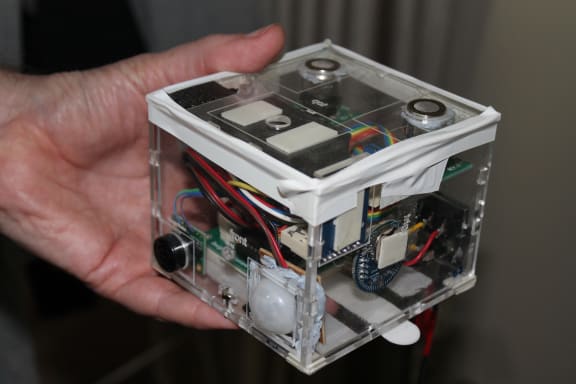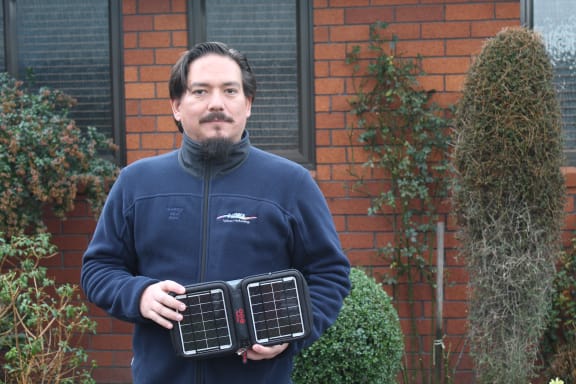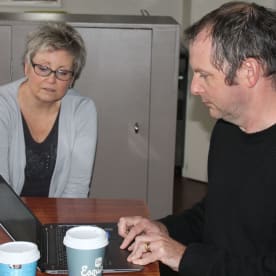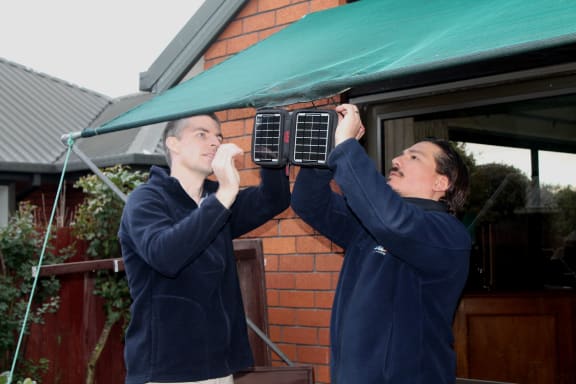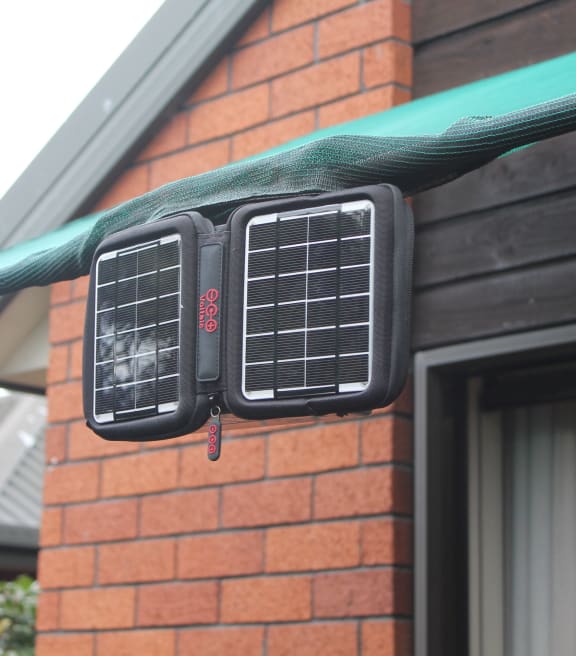Households in Rangiora are being wired up, inside and out, with small devices that measure wood smoke.
Much of science is detective work, according to Ian Longley. He and his team from NIWA are collecting clues as to what's causing air pollution in the North Canterbury township of Rangiora.
"It does have an established air quality problem. It does breach the national environmental standards for air quality and has done for several years."
The team has been trialling low-cost, indoor sensors known as PACMAN (Particles, Activity and Context Monitoring Autonomous Node) devices.
Initially located in different Rangiora houses, later the sensors were all placed in the home of a local woman, Lyn Wilkinson, to ensure they were recording the same data.
"They all saw the same thing, exactly the same signals - that was really reassuring."
Measured against a more expensive sensor that was used as a control, the devices have proved accurate in detecting would-be pollutants. The new technology uses a motion sensor to work out if the homeowner is causing the particles to move around the property.
Ian Longley says the instruments also measure temperature, carbon monoxide and carbon dioxide to establish whether the particles found are the result of something being burned.
"'Pollution' is a very emotive word. And when I say pollution, in our business, we mean effectively any contaminant in the air. One of the major sources of pollution or particles… in the air in a home are things like burnt toast, frying bacon.”
However Mr Longley said it wasn’t clear if those particles actually threatened human health - answering that question will be part of the study.
He said the PACMAN devices also monitored larger dust particles, but these are less harmful when inhaled as they don't travel as far down into the lungs.
Policing the Particles
For Gustavo Olivares, busy installing a new outdoor senor in Lynn Wilkinson’s garden, the desire to reduce air pollution is particularly important.
The designer of the sensor technology hails from Chile, where he says many homes are poorly insulated and wood is readily available for fuel.
"That means very smoky winters."
Gustavo says his hometown of Santiago regularly features in the high pollution rankings.
“So the issue of air quality, it’s quite a personal one for me.”
Mr Olivares began experimenting with new sensor technology, hoping to replace the existing expensive (yet precise) instruments with cost-effective sensors. He says these would be less accurate, but still paint a full picture of a property’s air quality. Mr Olivares says the new outdoor version was also solar-powered and could stay in the garden indefinitely.
“The idea is for us to leave it there over the winter and check the data regularly to see what it’s telling us.”
Homeowner Lyn Wilkinson also has a personal interest in the project.
“I’ve lived here for 20 years and for 15 of those years, I’ve had a terrible problem with smoke outside. It was getting into my house and I didn’t know how.”
The PACMAN device was able to track when particles were produced and the results were be cross-checked against a diary of Lyn Wilkinson’s activities. She noted anything that might cause smoke, steam or movement, such as using the electric jug, microwave cooking and opening external doors.
Ian Longley said this was a key part of the project - working with the participants to understand what was triggering the sensors.
“It is a kind of 'whodunnit' – there’s lots of things to investigate and for us to eliminate but that’s our main objective for this year: to show that we can do that.”
Lyn Wilkinson has her own take on the smoke issue, attributing it to two wood burners within her community.
“According to what data I had last year, I don’t think it’s anything to do with me. Those cooking things [and] the spikes on the graph, I don’t think they correlate.”
She read of the study in the newspaper and saw it as an opportunity to test her theories.
“I jumped on that very quickly to try and get myself some data.”
A Community Choice
However Ian Longley said the air quality data recorded might surprise the homeowners - as it sometimes did the scientists.
“We find it fascinating. As scientists, we love a good puzzle but, in our field of air quality, we always find, every time we measure somewhere there’s surprises.”
He said the new technology should make it easier for communities to understand what is impacting their air quality.
“I think a lot of the disputes that do occur around neighbourhood air quality occur in a no-data vacuum. In the absence of any hard data you are free to make a claim but unable to substantiate it.”
He said the role of his team was not to substantiate any one claim but rather to explain how air quality worked and to provide valuable information for both individuals and local authorities.
Ultimately he hoped that any household that wanted a PACMAN device would be able to have one and he said the sensors would be at their most useful operating as part of a network.
“For instance, we could put an instrument in a home and find out a little about the particle levels in a home but if the neighbour’s got one, if the people across the street have got one, if there’s outdoor ones in the street, it gives you a context, so it starts to explain why you have the levels in your home that you do.”
Next year the team will do just that - distributing the sensors around more Rangiora homes and the detective work will continue.
“There’s always something you didn’t expect, there’s always something you can’t initially explain and that’s what keeps us going.”
